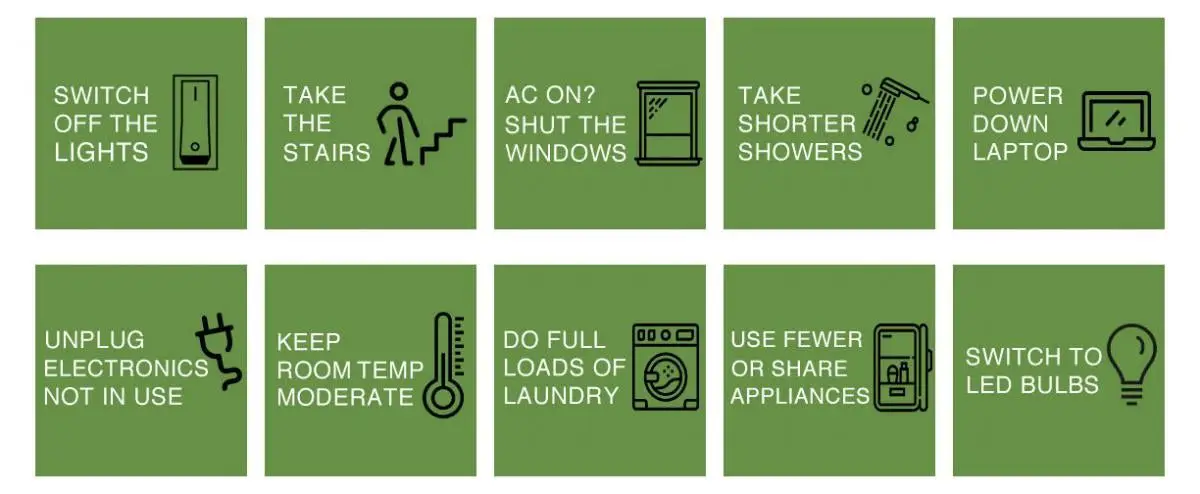Looking to reduce your carbon footprint without breaking the bank? Look no further! In this blog article, we’ll share practical tips for reducing your carbon footprint financially. From simple lifestyle changes to smart investments, we’ll explore how you can make a positive impact on the environment while saving money. So, whether you’re a budget-conscious individual or a savvy spender, these tips will empower you to take meaningful action towards sustainability. Let’s dive right into it and explore how you can contribute to a greener future while keeping your wallet happy.
Practical Tips for Reducing Your Carbon Footprint Financially
Introduction
Reducing your carbon footprint is not only essential for the health of our planet but can also have a positive impact on your finances. By making eco-friendly choices, you can save money while reducing your environmental impact. From energy-efficient improvements to adjusting your consumption habits, there are various practical tips you can implement to reduce your carbon footprint financially. In this article, we will explore these tips in detail and provide you with actionable steps to make a positive change.
1. Energy-Efficient Home Improvements
Making your home energy-efficient is one of the most effective ways to reduce your carbon footprint and save money in the long run. Consider the following improvements:
a) Insulation
Proper insulation helps regulate the temperature inside your home, reducing the need for excessive heating or cooling. This can significantly decrease your energy consumption and lower your utility bills. Some insulation options include:
- Adding insulation in the attic, walls, and floors
- Sealing air leaks around windows and doors
- Using weatherstripping and caulking to prevent drafts
b) Energy-Efficient Appliances
Replacing outdated appliances with energy-efficient models can make a significant difference in your carbon footprint and electricity bills. Look for appliances with an ENERGY STAR® label, as they meet strict energy efficiency standards. Key appliances to consider upgrading include:
- Refrigerators
- Washing machines
- Dishwashers
- Water heaters
- Heating and cooling systems
c) LED Lighting
Switching to LED (Light Emitting Diode) lights can reduce your energy consumption by up to 80%. LEDs are more energy-efficient and last longer than traditional incandescent bulbs. Replace your existing bulbs with LED alternatives and consider motion sensors or timers to optimize energy usage.
2. Sustainable Transportation Choices
Transportation is a significant contributor to greenhouse gas emissions. By adopting sustainable transportation choices, you can reduce your carbon footprint and save money on fuel costs. Here are some practical tips:
a) Public Transportation and Carpooling
Whenever possible, opt for public transportation, such as buses, trains, or trams. Carpooling with coworkers or neighbors is another great option to share commuting costs and reduce the number of vehicles on the road.
b) Cycling and Walking
Short distances can be covered by cycling or walking, which not only reduces carbon emissions but also improves your physical health. Consider investing in a bicycle and using it for local errands and short commutes.
c) Fuel-Efficient Vehicles
If you own a car, consider replacing it with a fuel-efficient or hybrid vehicle. These vehicles have lower carbon emissions and can save you money on fuel expenses in the long run. Research and compare different models to find one that suits your needs.
3. Renewable Energy Sources
Transitioning to renewable energy sources is a significant step in reducing your carbon footprint and saving money on utility bills. Consider the following options:
a) Solar Panels
Installing solar panels on your property can generate clean, renewable energy for your home. While the initial investment may be high, the long-term savings on electricity bills can offset the cost. Additionally, some governments offer incentives and tax credits for adopting solar power.
b) Wind Energy
If you have access to open land or live in an area with consistent wind patterns, installing a small wind turbine can generate clean energy. Research local regulations and requirements before considering this option.
c) Community Solar Projects
If installing solar panels is not feasible for your property, consider joining a community solar project. These initiatives allow you to purchase or lease a portion of a solar installation, reducing your reliance on fossil fuel-based electricity.
4. Conscious Consumption and Waste Reduction
Reducing consumption and waste not only lessens your carbon footprint but can also positively impact your financial well-being. Here’s how you can make a difference:
a) Buy Local and Organic
Support local farmers and businesses by purchasing locally produced organic food. This reduces the carbon emissions associated with long-distance transportation and encourages sustainable farming practices.
b) Reduce Single-Use Items
Cut down on single-use items such as plastic bags, disposable cutlery, and water bottles. Opt for reusable alternatives like cloth bags, utensils, and refillable water bottles. These choices not only reduce waste but can also save you money in the long run.
c) Minimize Food Waste
Plan your meals, buy only what you need, and properly store leftovers to minimize food waste. By doing so, you can save money on groceries while reducing the methane emissions produced by rotting food in landfills.
d) Recycle and Compost
Establish a recycling and composting system in your home. Properly sort and recycle paper, plastic, glass, and metal materials. Composting organic waste can reduce the amount of waste sent to landfills and provide nutrient-rich soil for your garden.
5. Financial Investments and Divestments
Consider aligning your financial investments and divestments with sustainable and eco-friendly companies. This can support businesses that prioritize reducing carbon emissions and contribute to a greener future. Some options to consider include:
a) Green Bonds and Sustainable Funds
Invest in green bonds or sustainable funds that focus on funding environmentally friendly projects. These investments not only provide potential financial returns but also support initiatives such as renewable energy projects, sustainable agriculture, and clean transportation.
b) Divestment from Fossil Fuels
Divest from companies involved in fossil fuel extraction and production. By redirecting your investments away from these industries, you can contribute to the transition to cleaner energy sources and send a message to the market.
c) Socially Responsible Banking
Explore banking options that prioritize environmental sustainability and social responsibility. Some financial institutions offer services that invest customer deposits into sustainable projects or provide eco-friendly financial products.
By implementing these practical tips for reducing your carbon footprint financially, you can make a positive impact on both the environment and your wallet. From energy-efficient home improvements to sustainable transportation choices and conscious consumption, there are numerous ways to contribute to a greener future while also saving money. Remember, even small changes can add up to significant results when it comes to reducing your carbon footprint. Start making these changes today and inspire others to follow suit. Together, we can create a more sustainable world.
Your carbon footprint is a LIE.
Frequently Asked Questions
Frequently Asked Questions (FAQs)
How can I reduce my carbon footprint financially?
There are several practical tips you can follow to reduce your carbon footprint while also saving money:
What are some energy-efficient upgrades I can make to my home?
You can install energy-efficient light bulbs, seal air leaks, upgrade to a programmable thermostat, and insulate your home to reduce energy consumption and costs.
How can I reduce my transportation-related carbon emissions?
You can carpool, use public transportation, cycle, or walk whenever possible to minimize your carbon emissions and save money on fuel and parking expenses.
Are there any financial benefits to using renewable energy sources?
Yes, investing in solar panels or wind turbines can help you generate your own energy and potentially earn money through feed-in tariffs or net metering programs.
What are some eco-friendly alternatives to traditional consumer products?
You can opt for reusable shopping bags, refillable water bottles, and cloth napkins instead of single-use items, reducing waste and saving money over time.
Can I save money by reducing water consumption?
Absolutely, by using low-flow showerheads, fixing leaks promptly, and installing water-efficient appliances, you can cut down your water bills while conserving this precious resource.
How can I minimize my reliance on fast fashion and save money?
One way to reduce the carbon footprint associated with clothing is by purchasing second-hand clothes or participating in clothing swaps instead of buying brand new items.
Are there any financial benefits to growing your own food?
Growing your own fruits, vegetables, and herbs can save you money on grocery bills, reduce transportation emissions, and provide you with fresh, organic produce.
What are some financial incentives for adopting green practices?
Many governments and organizations offer tax credits, grants, or rebates for energy-efficient upgrades, renewable energy installations, and eco-friendly initiatives, helping you save money while reducing your carbon footprint.
Final Thoughts
In conclusion, adopting practical tips for reducing your carbon footprint financially can make a significant impact on the environment while also benefiting your wallet. By opting for energy-efficient appliances, embracing sustainable transportation methods, and adopting eco-friendly habits such as reducing waste and conserving water, you can actively contribute to the fight against climate change while saving money in the long run. Additionally, investing in renewable energy sources and supporting businesses that prioritize sustainability can further enhance your efforts. With these simple yet powerful actions, you can play your part in protecting the planet for future generations. So, start implementing these practical tips for reducing your carbon footprint financially today.



